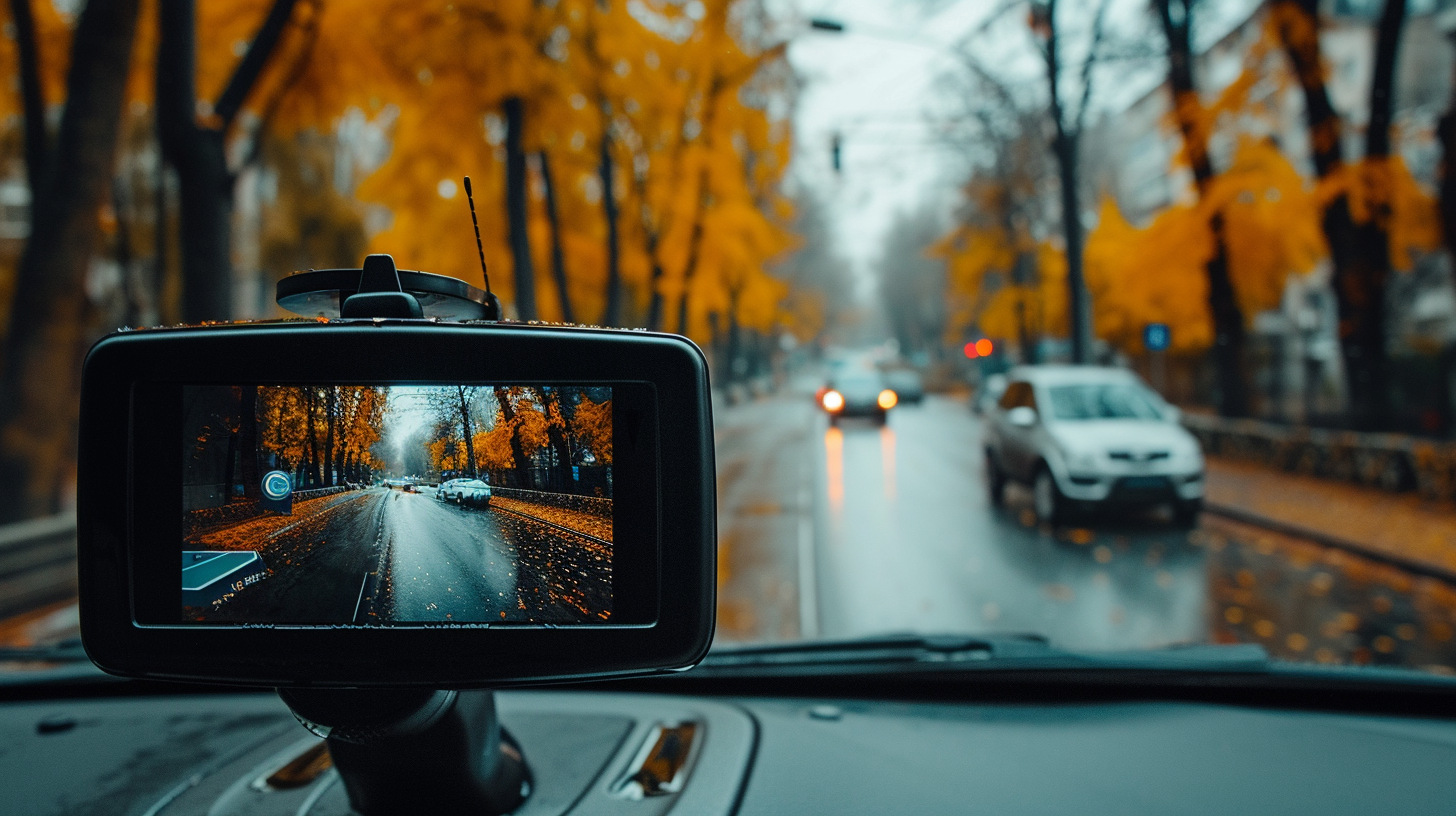If you’ve ever wished for an extra set of eyes while backing up your car, installing a backup camera might be just the solution you need. In this article, we’ll guide you through the step-by-step process of installing a backup camera in your car. With a few tools and some simple instructions, you’ll be able to enhance your safety and visibility on the road in no time. Let’s get started!
Gather the Necessary Tools and Materials
First, you’ll need to gather all the tools and materials necessary for installing a backup camera in your car. To begin, make sure you have a backup camera kit, which typically includes the camera itself, a transmitter, and a receiver. You’ll also need a power drill, a set of screwdrivers, and wire cutters. Don’t forget to have electrical tape, zip ties, and a wire stripper on hand as well. Additionally, you’ll need a multimeter to test the electrical connections and ensure everything is working properly. Lastly, make sure you have a roll of electrical wire and a fuse tap kit for connecting the camera to the car’s power supply. With all these tools and materials ready, you’ll be well-prepared to install your backup camera successfully.
Choose the Ideal Camera Placement
To ensure optimal camera positioning, it is crucial to choose the ideal placement for your backup camera. By strategically placing the camera, you can minimize blind spots and improve your visibility while reversing. This step is essential for maximizing the effectiveness of your backup camera installation.
Optimal Camera Positioning
When installing a backup camera in your car, make sure to carefully consider the ideal camera placement for optimal visibility. The placement of the camera plays a crucial role in ensuring that you have a clear view of what’s behind your vehicle. One of the most common and effective positions for the camera is just above the license plate. This position allows the camera to capture a wide-angle view of the area directly behind your car. Another option is to install the camera on the rear bumper, facing downwards. This location provides a lower vantage point and can help you see obstacles that may be close to the ground. Whichever position you choose, make sure it provides a clear and unobstructed view, giving you the peace of mind you need when reversing your vehicle.
Avoiding Blind Spots
To ensure maximum visibility and eliminate blind spots, you should carefully choose the ideal placement for your backup camera. The goal is to have a clear view of the area behind your vehicle, so you can confidently maneuver without any surprises. When deciding on the camera placement, consider the size and shape of your car. For smaller vehicles, mounting the camera in the center of the license plate is often the best choice. This provides a wide-angle view and minimizes blind spots. For larger vehicles like trucks or SUVs, placing the camera higher up on the rear bumper or tailgate can offer a better perspective. Ultimately, the key is to position the camera in a way that gives you the clearest view of your surroundings, ensuring your safety on the road.
Locate and Connect the Power Source
Once you have identified the power source, you can begin connecting it to your backup camera. Start by locating the power supply in your vehicle. This can be the car’s fuse box or the wiring harness behind the dashboard. Use a voltage tester to ensure that the power source is active. Once you have confirmed the power source, you will need to connect the camera’s power cable to it. Strip the wires at the end of the power cable and connect them to the corresponding wires in the power source. Use electrical tape or wire connectors to secure the connections. Make sure to double-check that the wires are properly connected and insulated. Once everything is in place, you can proceed to test the backup camera to ensure it is receiving power and functioning correctly.
Run and Conceal the Camera Wiring
Now it’s time to tackle the task of hiding your camera wire discreetly, routing it safely, and concealing it properly. You’ll want to ensure that the wiring is neatly tucked away to maintain a clean and professional look. By following these steps, you can ensure that your backup camera installation not only functions well but also looks great.
Hiding Camera Wire Discreetly
Make sure you carefully plan the route and placement of the camera wire to achieve a seamless and inconspicuous installation. Start by identifying the best path for the wire to run from the camera to the monitor or display unit. Look for existing wire channels, such as the ones used for power cables or audio wires, and utilize them if possible. If there are no suitable channels, consider using adhesive clips or cable ties to secure the wire along the edges of the interior. Remember to avoid any moving parts or hot areas to prevent damage to the wire. Once the wire is secured, use trim removal tools to carefully tuck it behind the panels and upholstery, ensuring it remains hidden from view. Finally, make sure to test the camera and wire connections before reassembling the interior to ensure everything is working properly.
Routing Camera Wiring Safely
You should carefully plan the route and conceal the camera wiring to ensure a neat and professional installation. Start by identifying the best path for the wiring to follow. Look for existing wire channels or gaps in the car’s interior where you can run the cable. Avoid areas that may interfere with other components, such as the airbags or seatbelts. Use zip ties or adhesive clips to secure the wiring along the chosen route, ensuring that it is held securely but not too tight. When concealing the wiring, use existing trim panels or fabric tape to blend it in with the car’s interior. Make sure to test the camera and wiring before finalizing the installation to ensure everything is working properly.
Concealing Camera Wiring Properly
To achieve a clean and seamless installation, ensure you carefully run and conceal the camera wiring in your car. Start by determining the best route for the wiring. Look for existing holes or channels in the car’s body where you can pass the wiring through. If there are no suitable openings, you may need to drill a small hole to feed the wiring through. Be cautious not to damage any other components or wiring during this process.
Once you have the route planned, use zip ties or adhesive clips to secure the wiring along the chosen path. Make sure to keep the wiring away from any moving parts or areas that could cause damage. If necessary, use electrical tape to further secure and protect the wiring.
For a neat and professional finish, conceal the wiring by tucking it behind panels or trim pieces. You can use a trim removal tool to carefully remove the panels and then route the wiring behind them. Finally, reattach the panels and trim pieces, ensuring they are securely in place.
Mount and Install the Camera
Positioning and securing the camera is an essential step in installing a backup camera in your car. Start by deciding where you want to mount the camera. The ideal location is usually above the license plate, as it provides a clear view of the rear. Use a drill to create holes for the camera’s mounting screws. Once the holes are ready, insert the screws and tighten them securely. Make sure the camera is level and facing straight back. Next, you need to connect the camera to the wiring harness. Follow the manufacturer’s instructions to properly connect the wires. Once everything is connected, test the camera to ensure it is functioning correctly. Adjust the camera angle if needed, and then secure any loose wires. With the camera mounted and installed, you are one step closer to enjoying the benefits of a backup camera in your car.
Connect the Camera to the Display Unit
Connect the camera with the display unit by inserting the appropriate cables into the corresponding ports. First, locate the video output port on the camera and the video input port on the display unit. Connect one end of the video cable to the camera’s output port and the other end to the display unit’s input port. Next, identify the power input port on the camera and the power output port on the display unit. Connect one end of the power cable to the camera’s input port and the other end to the display unit’s output port. Lastly, if your camera has an additional feature like a reverse signal wire, connect it to the appropriate port on the display unit. Once all the cables are securely connected, you can proceed to the next step of the installation process.
Install and Connect the Display Unit
Plug in the display unit to the power source and connect it to the camera using the appropriate cables. First, locate the power source for the display unit, which is usually the car’s fuse box or the cigarette lighter. Once you have identified the power source, plug in the display unit. Make sure to use the correct cable to connect the display unit to the camera. The cable will typically have a specific connector on one end that fits into the display unit, and the other end will have a matching connector for the camera. Simply plug in both ends securely. Take your time to ensure a proper connection, as a loose connection can affect the functionality of the backup camera system.
Test and Adjust the Camera Settings
Before you start using the backup camera, make sure to test and adjust its settings to ensure optimal performance. Once the camera is installed and connected, turn on the display unit and camera. Check if the camera view is clear and if the image is properly aligned. You may need to adjust the camera angle or position to get the best view. Also, ensure that the camera is facing straight back and not tilted to one side. Some backup cameras come with adjustable guidelines that help with parking and reversing. Make sure to enable or adjust these guidelines according to your preference. Additionally, test the camera in different lighting conditions to ensure it provides a clear view during both day and night. By testing and adjusting the camera settings, you can ensure that the backup camera works effectively when you need it the most.
Secure and Clean up the Installation
Once you have completed the installation of the backup camera, you can now secure and clean up the installation to ensure everything is properly mounted and organized. Start by double-checking all the connections and fasteners to make sure they are tight and secure. This will prevent any vibrations or movement that could affect the camera’s performance. Use zip ties or wire looms to neatly bundle and secure any loose wires or cables. This will not only improve the overall appearance of the installation but also prevent any potential damage caused by wires hanging loosely. Additionally, consider using adhesive-backed cable clips to route and secure the wires along the vehicle’s interior panels. Finally, clean up any debris or excess adhesive that may have been left behind during the installation process. This will give your backup camera installation a professional and polished look.

Lucas is an experienced vehicle technician with hands-on knowledge of almost every car brand available. Throughout his career, Lucas has worked on a wide range of vehicles, including domestic and foreign models, sports cars, trucks, and SUVs.





